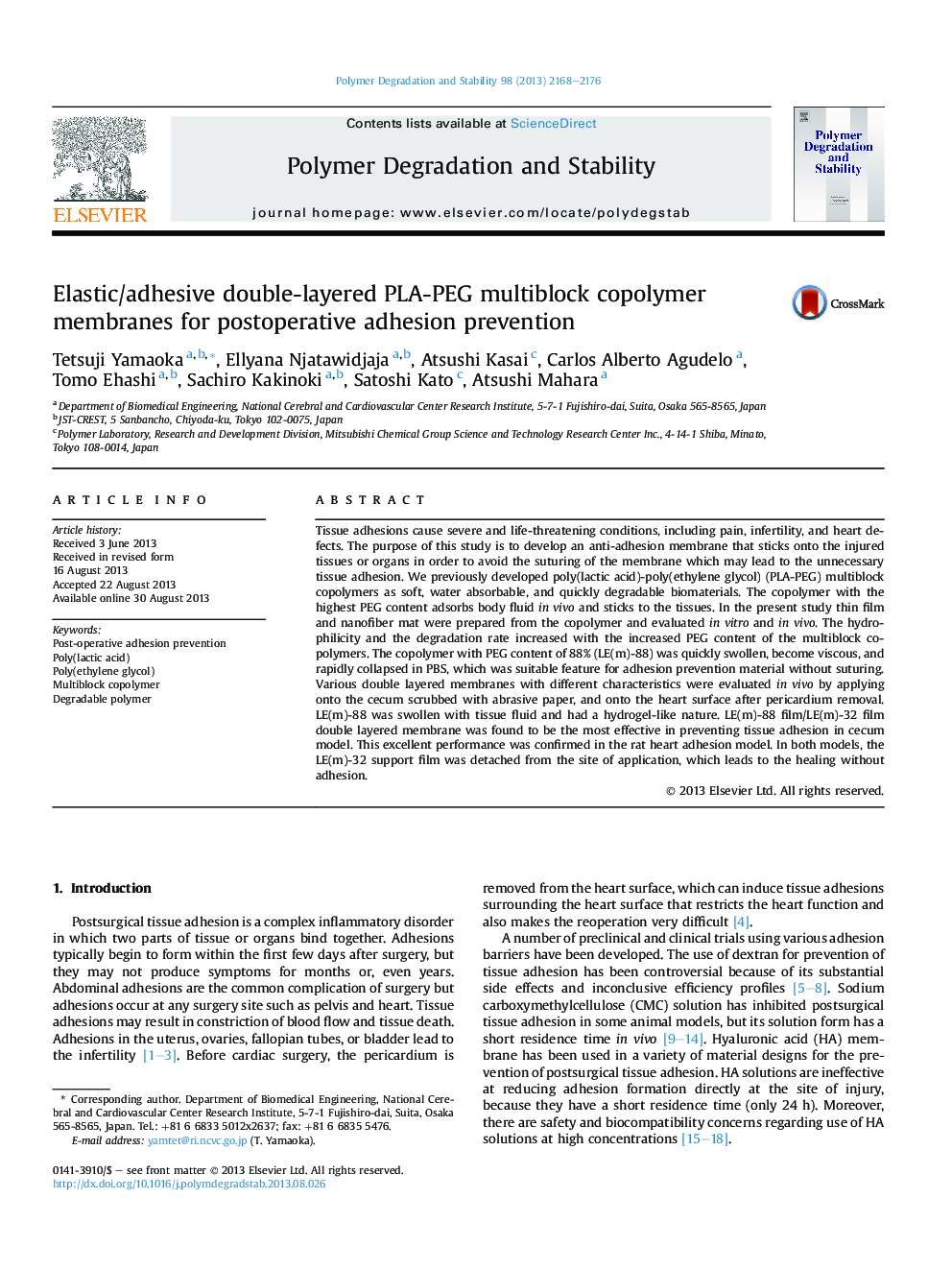| Article ID | Journal | Published Year | Pages | File Type |
|---|---|---|---|---|
| 5202256 | Polymer Degradation and Stability | 2013 | 9 Pages |
Abstract
Tissue adhesions cause severe and life-threatening conditions, including pain, infertility, and heart defects. The purpose of this study is to develop an anti-adhesion membrane that sticks onto the injured tissues or organs in order to avoid the suturing of the membrane which may lead to the unnecessary tissue adhesion. We previously developed poly(lactic acid)-poly(ethylene glycol) (PLA-PEG) multiblock copolymers as soft, water absorbable, and quickly degradable biomaterials. The copolymer with the highest PEG content adsorbs body fluid in vivo and sticks to the tissues. In the present study thin film and nanofiber mat were prepared from the copolymer and evaluated in vitro and in vivo. The hydrophilicity and the degradation rate increased with the increased PEG content of the multiblock copolymers. The copolymer with PEG content of 88% (LE(m)-88) was quickly swollen, become viscous, and rapidly collapsed in PBS, which was suitable feature for adhesion prevention material without suturing. Various double layered membranes with different characteristics were evaluated in vivo by applying onto the cecum scrubbed with abrasive paper, and onto the heart surface after pericardium removal. LE(m)-88 was swollen with tissue fluid and had a hydrogel-like nature. LE(m)-88 film/LE(m)-32 film double layered membrane was found to be the most effective in preventing tissue adhesion in cecum model. This excellent performance was confirmed in the rat heart adhesion model. In both models, the LE(m)-32 support film was detached from the site of application, which leads to the healing without adhesion.
Related Topics
Physical Sciences and Engineering
Chemistry
Organic Chemistry
Authors
Tetsuji Yamaoka, Ellyana Njatawidjaja, Atsushi Kasai, Carlos Alberto Agudelo, Tomo Ehashi, Sachiro Kakinoki, Satoshi Kato, Atsushi Mahara,
